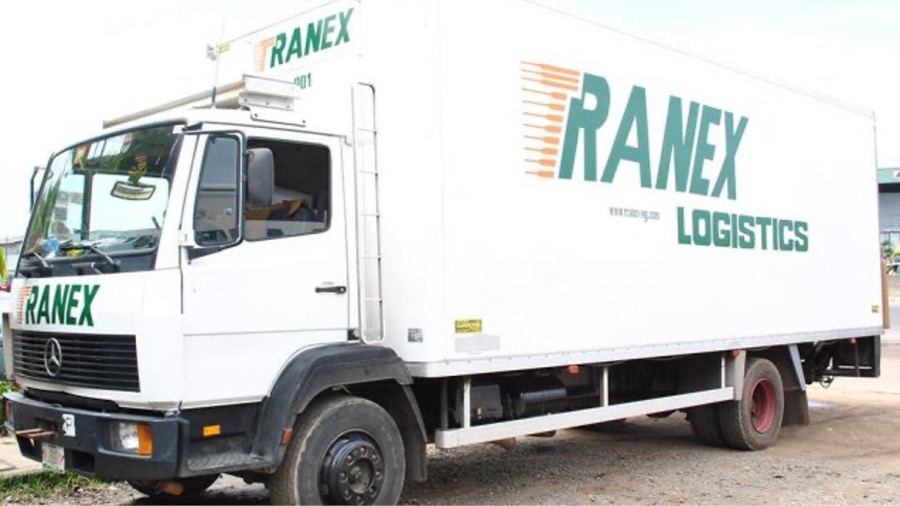Introduction: TRANEX at a Crossroads
Trans-Nationwide Express Plc (TRANEX) is facing one of its most challenging periods in recent history. The company’s latest earnings report reveals weak profitability and a rise in liabilities, raising concerns about its ability to stage a recovery. Investors are now questioning whether TRANEX can implement the necessary strategies to regain financial stability and remain competitive in Nigeria’s growing logistics sector.
Earnings Decline: A Troubling Trend
- Q4 2024 Revenue: ₦262.97 million
- Q4 2023 Revenue: ₦536.82 million
- YoY Decline: 51%
The company’s 51% year-on-year revenue decline highlights a significant loss of market share and operational inefficiencies. Despite strong demand in the logistics sector, TRANEX has struggled to maintain its customer base, potentially due to outdated service offerings and pricing strategies that fail to match consumer expectations. The revenue drop raises concerns about whether the company can adapt to evolving market dynamics or if deeper structural issues are at play. Without significant adjustments in its business model and customer acquisition strategies, TRANEX risks further erosion of its competitive position.
🔹 Key Takeaway: The drastic revenue decline signals that TRANEX is losing ground to competitors and must rethink its market strategy. The sharp drop in earnings suggests that the company is struggling to maintain operational efficiency and customer retention. Without a strategic pivot, TRANEX risks further erosion of its financial stability and market position in the logistics sector.
Rising Liabilities: A Worsening Debt Burden
| Metric | TRANEX (Dec 2024) |
|---|---|
| Total Liabilities | ₦400.04 million |
| Shareholder’s Fund | ₦320.34 million |
| Debt-to-Equity Ratio | 1.25 |
TRANEX’s liabilities have increased, outpacing its shareholder’s equity and indicating a rising debt burden. A high debt-to-equity ratio of 1.25 suggests that the company is relying heavily on borrowed funds to sustain operations. This increasing leverage raises concerns about TRANEX’s ability to generate sufficient cash flow to meet its obligations without further straining its balance sheet. If this trend continues, it could limit TRANEX’s ability to invest in growth initiatives, secure additional funding, or effectively compete against stronger rivals in the logistics sector.
🔹 Key Takeaway: Rising liabilities and a worsening debt burden put TRANEX in a vulnerable financial position, raising questions about its long-term viability. The company’s increasing reliance on debt to sustain operations could create challenges in meeting financial obligations, especially in an industry that requires continuous investment in infrastructure and technology. If TRANEX is unable to improve its financial management or secure favorable financing terms, its ability to compete effectively may be further compromised.
Profitability Concerns: From Gains to Losses
- Q4 2023 Net Profit: ₦32.60 million
- Q4 2024 Net Loss: ₦95.14 million
From reporting a ₦32.60 million profit in Q4 2023 to a ₦95.14 million loss in Q4 2024, TRANEX’s profitability has taken a sharp downturn. This massive swing from profit to loss suggests that the company’s cost structure is unsustainable, with rising operational expenses outpacing revenue generation. The sharp decline in earnings underscores persistent operational inefficiencies, increased competition, and rising costs, making it clear that TRANEX needs a significant overhaul in its financial strategy. If these issues are not addressed, future quarters may see further deterioration in profitability and investor confidence.
🔹 Key Takeaway: Without aggressive cost-cutting measures and new revenue streams, TRANEX may continue posting losses in upcoming quarters.
Liquidity Risks: Can TRANEX Stay Afloat?
- Cash & Cash Equivalents (Dec 2024): ₦86.06 million
- Total Assets: ₦720.38 million
TRANEX’s limited cash reserves pose another major risk. With only ₦86.06 million in available cash, the company may struggle to meet short-term obligations, finance daily operations, or fund essential growth projects. This liquidity constraint places significant pressure on TRANEX to improve its cash flow management and explore alternative financing options. If the company fails to secure new revenue streams or cost efficiencies, it may be forced to take on additional debt, further straining its financial position and limiting future growth potential.
🔹 Key Takeaway: TRANEX’s liquidity position is weak, and urgent measures are needed to improve cash flow and financial stability.
Path to Recovery: What Needs to Change?
1. Cost Management & Efficiency
Reducing overhead costs and optimizing logistics operations will be crucial to restoring profitability. TRANEX must identify inefficiencies in its cost structure and streamline expenses to improve operational margins. Implementing automation, renegotiating supplier contracts, and leveraging economies of scale could help cut costs without compromising service quality. A leaner, more efficient operation will be essential in regaining investor confidence and ensuring long-term sustainability.
2. Service Diversification
Expanding its service offerings, including e-commerce logistics, last-mile delivery, and freight solutions, could help TRANEX regain lost revenue streams and strengthen its market presence. By tapping into the rapidly growing e-commerce sector, the company can attract a wider customer base and drive higher transaction volumes. Additionally, investing in technology-driven logistics solutions could enhance service efficiency and differentiate TRANEX from competitors, ultimately improving profitability and long-term sustainability.
3. Strategic Partnerships & Funding
Securing external funding and forging strategic partnerships with industry leaders could provide much-needed capital and access to new markets. Collaborating with e-commerce platforms and international logistics firms could help TRANEX enhance operational efficiency, streamline supply chain processes, and leverage new technologies. Additionally, forming joint ventures with established logistics providers could accelerate market penetration and position TRANEX for long-term growth.
🔹 Key Takeaway: While TRANEX faces significant financial hurdles, strategic reforms in cost control, service expansion, and partnerships could pave the way for recovery.
Conclusion: A High-Risk Investment with Uncertain Prospects
TRANEX is at a critical juncture, and its ability to recover depends on swift and effective action. The company must demonstrate resilience by implementing structural reforms, improving operational efficiencies, and securing sustainable funding. Investors should watch for cost-cutting initiatives, strategic partnerships, and revenue recovery signals, as these will be key indicators of whether TRANEX can navigate its financial difficulties and reposition itself for growth.
📌 Investor Tip: TRANEX remains a high-risk stock. Proceed with caution and monitor upcoming financial reports for signs of improvement.
